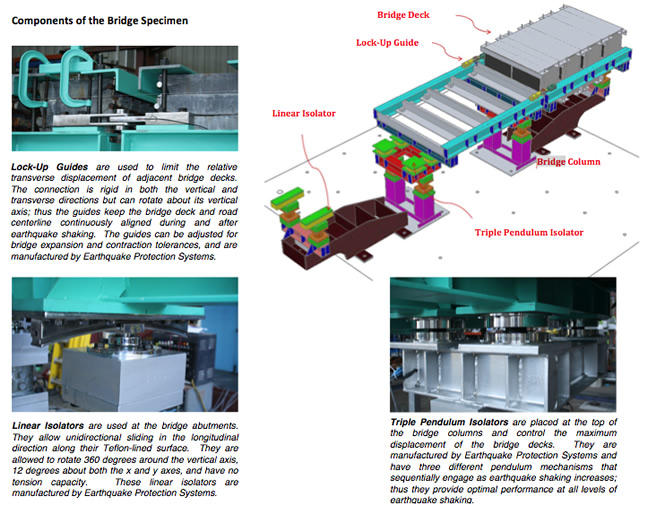Because of the ability of the Segmental Displacement Control Isolation concept to keep the bridge segments aligned during earthquakes, this technology may be particularly attractive for use in protecting high speed rail systems being constructed in California and around the world. Stephen Mahin, PEER Director and UC Berkeley professor of Civil and Environmental Engineering, and Ken Orgozalek, UC Berkeley gradate student in Civil and Environmental Engineering, are conducting this research.
The test was a completed as a part of PEER�s Transportation Research Program, which has been conducting research on various new bridge designs that are able to withstand large earthquakes without significant damage. By eliminating the need for extensive bridge repair, closure, or replacement after earthquakes, these new designs can prevent disruption of emergency response and recovery efforts, thus making our communities more resilient. Emphasis is placed on bridge systems that can be constructed more quickly and economically, and with less impact on the environment. Some new design approaches include systems that use new low carbon materials, rock on their foundations, deform but automatically re-center following a major earthquake, or are prefabricated to promote high quality and rapid construction.

This research was funded by PEER, the National Science Foundation and Earthquake Protection Systems, a Vallejo-based seismic isolation bearing manufacturer.
Media Coverage of the Testing
- Wired
- SF Chronicle
- UC Berkeley
- Channel 7, KGO TV
- KCBS Radio
Schedule of Events from May 26, 2010:
| 10:30 am | Welcome and Presentation about the new bridge system by Stephen Mahin (PEER) & Ken Orgozalek (UC Berkeley) |
| 11:00 am | View Specimen and Watch Live Shaking Table Demonstration |
| 12:30 pm | Lunch and Presentation on "Seismic Isolation for a Resilient and Sustainable Society" by Victor Zayas (EPS) |
